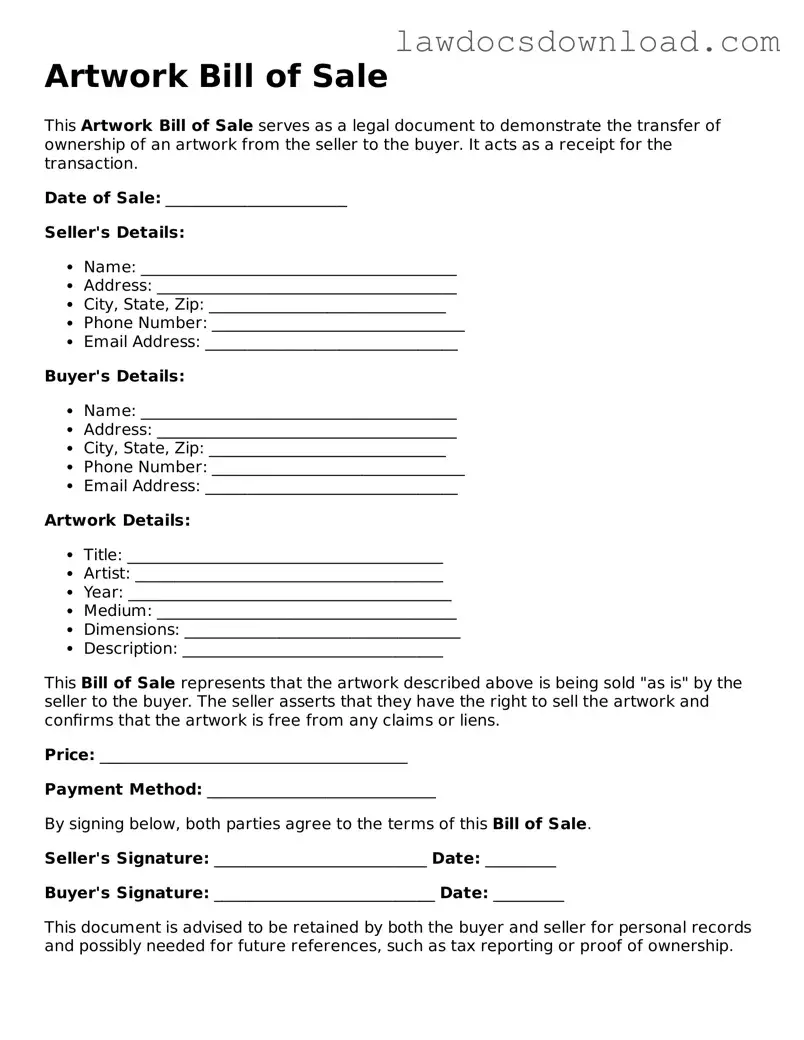Artwork Bill of Sale
This Artwork Bill of Sale serves as a legal document to demonstrate the transfer of ownership of an artwork from the seller to the buyer. It acts as a receipt for the transaction.
Date of Sale: _______________________
Seller's Details:
- Name: ________________________________________
- Address: ______________________________________
- City, State, Zip: ______________________________
- Phone Number: ________________________________
- Email Address: ________________________________
Buyer's Details:
- Name: ________________________________________
- Address: ______________________________________
- City, State, Zip: ______________________________
- Phone Number: ________________________________
- Email Address: ________________________________
Artwork Details:
- Title: ________________________________________
- Artist: _______________________________________
- Year: _________________________________________
- Medium: ______________________________________
- Dimensions: ___________________________________
- Description: _________________________________
This Bill of Sale represents that the artwork described above is being sold "as is" by the seller to the buyer. The seller asserts that they have the right to sell the artwork and confirms that the artwork is free from any claims or liens.
Price: _______________________________________
Payment Method: _____________________________
By signing below, both parties agree to the terms of this Bill of Sale.
Seller's Signature: ___________________________ Date: _________
Buyer's Signature: ____________________________ Date: _________
This document is advised to be retained by both the buyer and seller for personal records and possibly needed for future references, such as tax reporting or proof of ownership.
Note: It is recommended to consult with legal advice tailored to your specific circumstances, especially if the artwork sale involves significant value or if you are uncertain of legal requirements in your jurisdiction.
